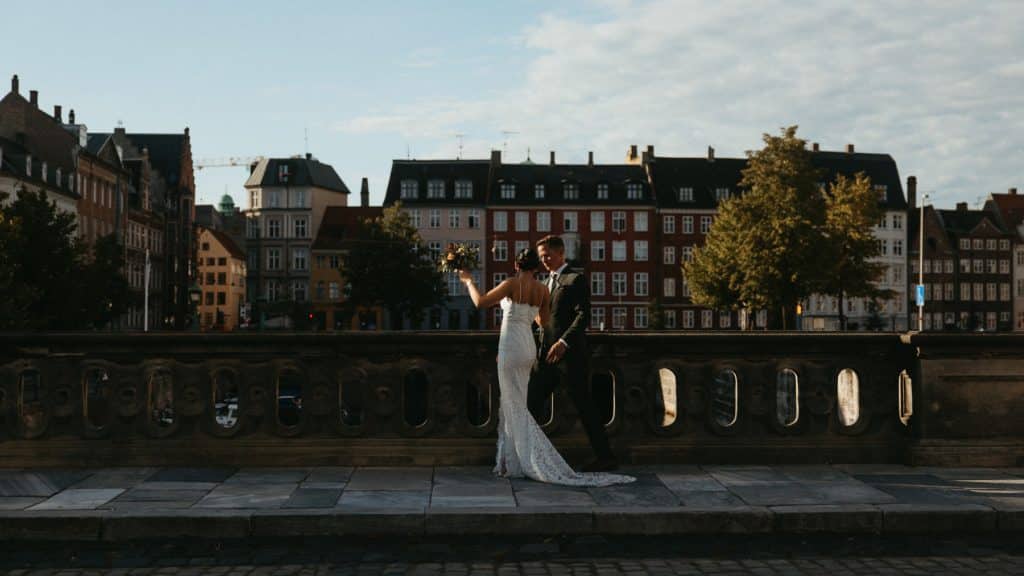Even if you’re just getting started with your photography career, there’s a good chance you already know that there’s a fair bit of equipment involved with your new line of work. While, yes, a camera and multiple lenses will be absolutely necessary for capturing your best work possible, you’re also going to want to invest in wedding photography equipment to help you elevate your work. While we wouldn’t say that each of the pieces is necessary, we would say they are worth considering. Pick what works for you and your style, and we have no doubts that your wedding photography career will be off to a great start.
1. A reliable camera bag
If you have a camera, you likely already have a bag for it. Having said that, as you grow and become more established as a wedding photographer, you’re going to start investing more in lenses. We mentioned seven different lenses above, and while you don’t necessarily need all of them, you will need 4-5, which means you need a camera bag that can carry all your lenses plus your camera (and anything else you might require).
Here’s what we recommend when picking out a camera bag:
2. A drone
If you’ve done your research into wedding photography, you know that wedding drone photography has become popular, especially for those of you who shoot wedding videos pr photographers that like to add a little extra to their offering. If you want to upgrade your offerings or make yourself stand out as a wedding photographer, offering drone photography is a great way to do this.
Some things to keep in mind when considering using drone photography at a wedding include:
Local laws about drone usage
Your own ability (i.e. losing control of a drone at a wedding could be a disaster)
It’s an extra thing to think about on an already frantic day
3. A second camera
When you’re already carrying around multiple lenses and all the other equipment that you need to shoot a wedding, it might seem like overkill to bring a second camera, but trust us, it is worth it. Think of it this way: What if, for whatever reason, your camera just stopped working? Or, what if you were to somehow drop your camera? If you don’t have a backup, you won’t be able to shoot the wedding, and we don’t think we need to tell you how bad that could be.
For a second camera we recommend:
Something lightweight
Something compact and portable
Something that is compatible with all of your lenses
Ideally the same as your primary body so that you have the same resolution, color reproduction contrast etc… It will make your life so much easier in post-production.
4. Camera harness
As a wedding photographer, you need to be ready to snap a photo at a moment’s notice. This means you need to have your camera on you at all times. There are many options for this, but because you’re working at a wedding, we recommend upgrading to something more professional than what came standard with your camera.
Look for something professional and durable
Consider a dual harness if you carry two cameras
Invest in something reliable and well-made
5. Back-up memory cards
If you haven’t already picked up on this you want to be cautious and over-prepared as a wedding photographer. Remember, this wedding is only going to happen once. There are no do-overs, meaning you can’t afford to have an off-day or forget a piece of equipment. Having backup memory cards saves you from any of your cards becoming corrupted.
Get cards with fast read and write speeds
Invest in large storage sizes
Consider bringing extra batteries for your camera
6. Photo editing software
No doubt about it, every wedding photographer needs to have access to photo editing software. It doesn’t matter how talented you are, you will need to manipulate images to get the right lighting and contrast. Keep in mind, though, this doesn’t mean you should use any basic photo editing software. You need to invest in professional software that will give you professional results. There are two major software programs that we recommend:
Lightroom
Photoshop
Cature One
Affinity
7. Speedlight Flash
If you’re going to be shooting in any dark spaces—and, let’s be honest, between the reception and dark churches, there will likely be some dark scenes—you’re going to want to have a speedlight on hand. A speedlight can help you achieve the perfect lighting when you don’t have as much control as you would like. Without a speedlight, you’ll likely end up pushing your ISO too high and end up with muddy grainy photos, which we want to avoid at all costs.
Scenarios where you might need speedlight include:
8. Light stands
If you have a speedlight, you also might want to invest in a light stand. A light stand gets the flash off your camera and allows you to position the light wherever you want it. This allows you to manipulate the image more and get creative with your shoots. It’s also worth investing in a high-quality light stand so you can feel comfortable knowing that your speedlight is securely attached and not going to fall. With this setup you have the ability to trigger the flash remotely and can create some really dynamic images.
If you want to mount your speedlight on a light stand, you may also need:
Umbrella adapter
Cold shoe mount
